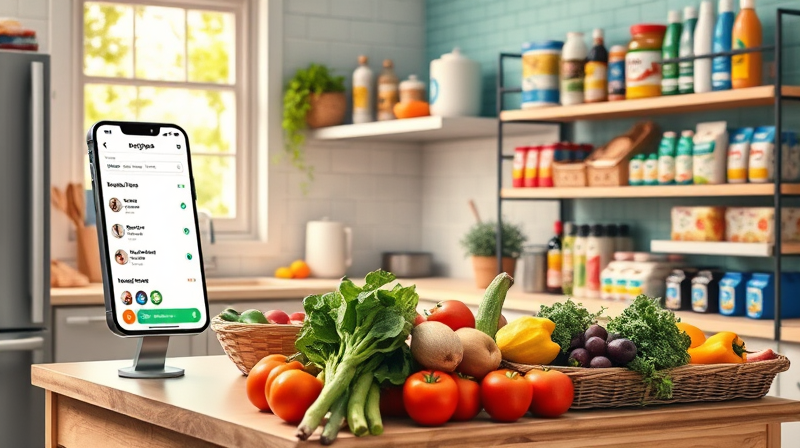Many households today are challenged with the rising cost of groceries, yet the need to maintain high quality in meals remains a top priority. The key is combining strategic planning with smart, sustainable habits that not only trim your shopping budget but also enhance your culinary experience. This article explores a blend of modern technology and proven practices to help you achieve both goals simultaneously.
With creativity and organization, you can transform your approach to grocery shopping. By incorporating innovative planning, utilizing the benefits of local shopping, and adapting to modern trends, you can significantly reduce your expenses without compromising the quality of ingredients on your table.
Effective Meal Planning and Budget Management
Meal planning is the cornerstone of a cost-effective shopping strategy. Planning your meals ahead of time minimizes impulsive purchases and prevents food waste, ensuring that every item you buy is purposeful. When you plan your weekly meals, you can use existing ingredients more efficiently, reducing the need for expensive, last-minute takeout orders.
With modern mobile apps and digital tools, you can easily track recipes and plan your menus. These tools not only simplify scheduling but also alert you to discounts, seasonal produce, and other opportunities to save. Moreover, a detailed shopping list generated from your meal plan is invaluable in reducing unnecessary extras and keeping your spending in check.
- Strategize Your Meals: Dedicate a day to map out your weekly menu, ensuring that every ingredient is accounted for.
- Track Your Inventory: Regularly review your pantry and fridge so you can repurpose leftovers and avoid duplicate purchases.
- Make Use of Apps: Use specialized apps that offer recipe suggestions and track seasonal deals to further optimize your meal planning.
Smart Shopping Tactics
Beyond meal planning, smart shopping is about targeting the best economical opportunities available. Embrace options like buying in bulk and shopping local. Both choices offer high-quality ingredients at attractive prices.
Local markets, for instance, often showcase fresher produce compared to large chains, and by purchasing directly from producers, you get better deals while supporting your community. In addition, bulk purchasing for staple items is a practical way to secure lower prices for everyday necessities without sacrificing quality.
- Local Markets: These venues can provide top-notch, fresh ingredients while keeping costs low.
- Bulk Purchases: For pantry essentials like grains and legumes, bulk buying is both economical and efficient.
- Store Brands: Consider switching to store brands. Many generic products offer the same quality as their branded counterparts, often at a fraction of the cost.
Gradual adjustments, such as testing one store-brand swap each week, allow you to evaluate their quality without causing disruption to your routine. Over time, these small changes can lead to significant savings, with studies showing that such adjustments might cut grocery bills by as much as 40%.
Leveraging Technology and Optimizing Kitchen Organization
Technology plays a critical role in today’s shopping landscape. With dedicated grocery apps, you can keep track of special discounts, manage your shopping lists, and uncover the best local deals. Leveraging these digital tools is a game-changer for any budget-conscious shopper.
Moreover, maintaining a well-organized kitchen can drastically reduce food waste. Properly storing and freezing leftovers not only locks in flavor but also extends the life of your meals. An organized kitchen helps you instantly recognize what you already have, making it easier to build new recipes around existing ingredients.
- Digital Tools: Use grocery apps to stay updated on sales and special offers.
- Kitchen Organization: Establish a system that allows you to keep track of your inventory and reduce wastage.
- Efficient Storage: Invest in good storage containers to preserve leftovers and fresh ingredients longer.
Revisiting leftovers can also inspire creativity in the kitchen. Instead of viewing last night's dinner as waste, think of it as the foundation for a new meal. With a few tweaks—like adding a fresh sauce or mixing in new vegetables—leftover dishes can be revitalized into something entirely new and delicious.
Direct Purchasing and Community Support
For families who consume meat or specialty items regularly, consider direct purchasing options like connecting with local farmers. Buying larger quantities directly from producers can often secure a better price than typical supermarket options. This method not only reduces your grocery bills but also supports local agricultural communities.
Visiting farmers' markets and engaging with local producers helps establish relationships that can lead to periodic discounts or exclusive offers. This kind of direct interaction gives you access to higher-quality products while contributing to a sustainable, community-based economy.
- Bulk Meat Buying: Explore options such as purchasing a quarter cow or a portion of a pig for cost-effective quality meat.
- Specialty Items: Source unique ingredients directly from local artisans or small-scale producers for both savings and premium quality.
- Community Engagement: Support local shops and markets, strengthening the local economy while keeping your expenses in check.
In conclusion, achieving a balance between high quality and low expense in grocery shopping is entirely feasible. By combining pre-planned meals, smart purchasing strategies, efficient utilization of kitchen storage, and modern technology, you empower yourself to make informed, sustainable choices. Every small adjustment contributes to significant savings over time, allowing you to enjoy delicious, nutritious meals without the financial strain.
Embrace these innovative strategies to transform your shopping habits and support a healthier lifestyle that both your wallet and your family will appreciate.








